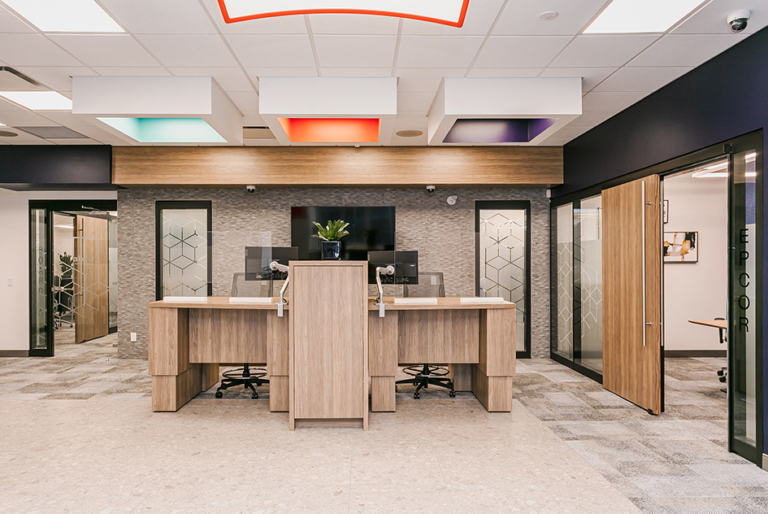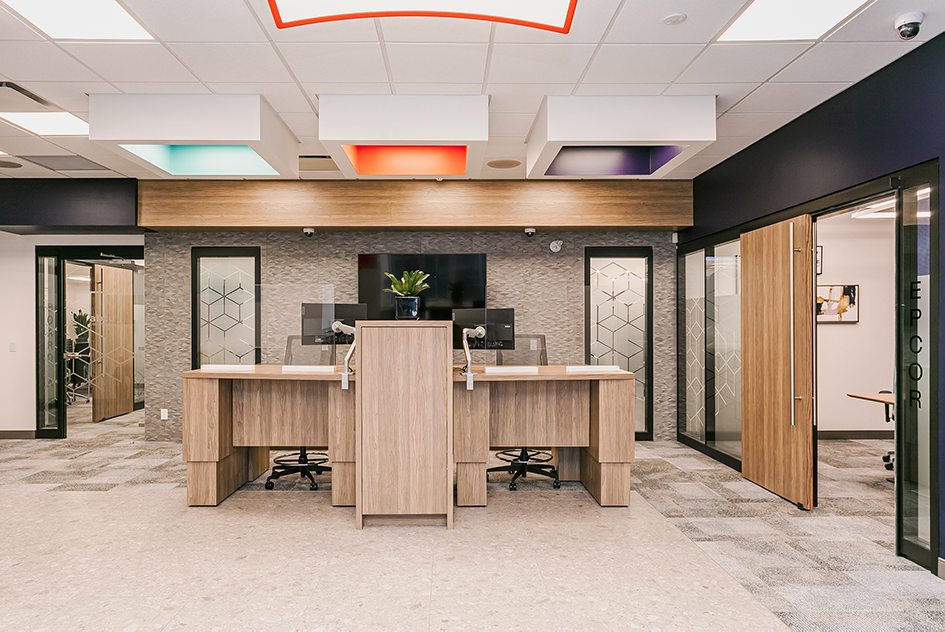Inclusivity and accessibility are essential elements of any public-facing design. Financial institutions recognize the importance of ensuring that their banking spaces are welcoming and accessible to all. For NewGround, a firm specializing in creating branded spaces, inclusivity goes beyond legal requirements—it’s a fundamental part of our design ethos.
Why it Matters
Banking customers come from all walks of life, each with unique needs and abilities. Some may have mobility challenges, others have sensory impairments, and some might face cognitive hurdles. Ensuring that banking spaces are accessible to all is not just an ethical consideration; it’s a necessity to serve the entire community effectively.
Beyond the ethical imperative, regulatory requirements mandate accessibility in public spaces, including financial institutions. Non-compliance not only carries legal consequences but also can damage an institution’s reputation. Embracing inclusivity isn’t just about ticking boxes; it’s about creating a welcoming environment for everyone.

NewGround’s Commitment to Inclusivity
Our approach to design is holistic, where inclusivity is embedded in the very foundation of every project. From concept to execution, inclusivity is a constant consideration. To achieve this, NewGround employs a specialized team of experts, including architects, interior designers, and accessibility consultants. We continually update and expand our knowledge to stay at the forefront of inclusive design, ensuring our clients can serve their customers effectively.
NewGround’s commitment to inclusivity translates into physically accessible banking spaces. Entrances, counters, and seating areas are designed to accommodate individuals with mobility challenges. Features like ramps, elevators, and accessible restrooms are integral components of our projects. Some teller desks are even height adjustable to accommodate customers in wheelchairs or mobility devices.
Creating sensory-inclusive spaces is another priority and a growing concern among consumers. NewGround incorporates features like tactile signage, braille instructions, and assistive listening devices to ensure that customers with visual or hearing impairments can navigate and engage with ease.
Recognizing the importance of cognitive accessibility, NewGround designs spaces that are welcoming to individuals with cognitive challenges. Clear wayfinding, calming design elements, and well-defined transaction processes contribute to a more inclusive environment.

The Impact of Inclusive Banking Spaces
Inclusive design enhances the overall customer experience. It makes banking more convenient and welcoming for everyone, fostering a sense of belonging and respect.
The impact of accessible banking spaces extends beyond the individual experience. It positively influences community engagement and enhances an institution’s reputation. Inclusivity builds customer loyalty and encourages positive word-of-mouth.
NewGround views accessible banking spaces as a necessity, not an option. Our unwavering commitment to inclusivity and expertise in design ensures that financial institutions can create accessible environments for all, regardless of their abilities. By embracing inclusivity, financial institutions meet regulatory requirements and show customers that they matter, fostering a sense of community, respect, and equality.
For banks and organizations looking to make a positive impact and create inclusive banking spaces, partnering with NewGround is a step toward a more equitable and welcoming future for all customers.
